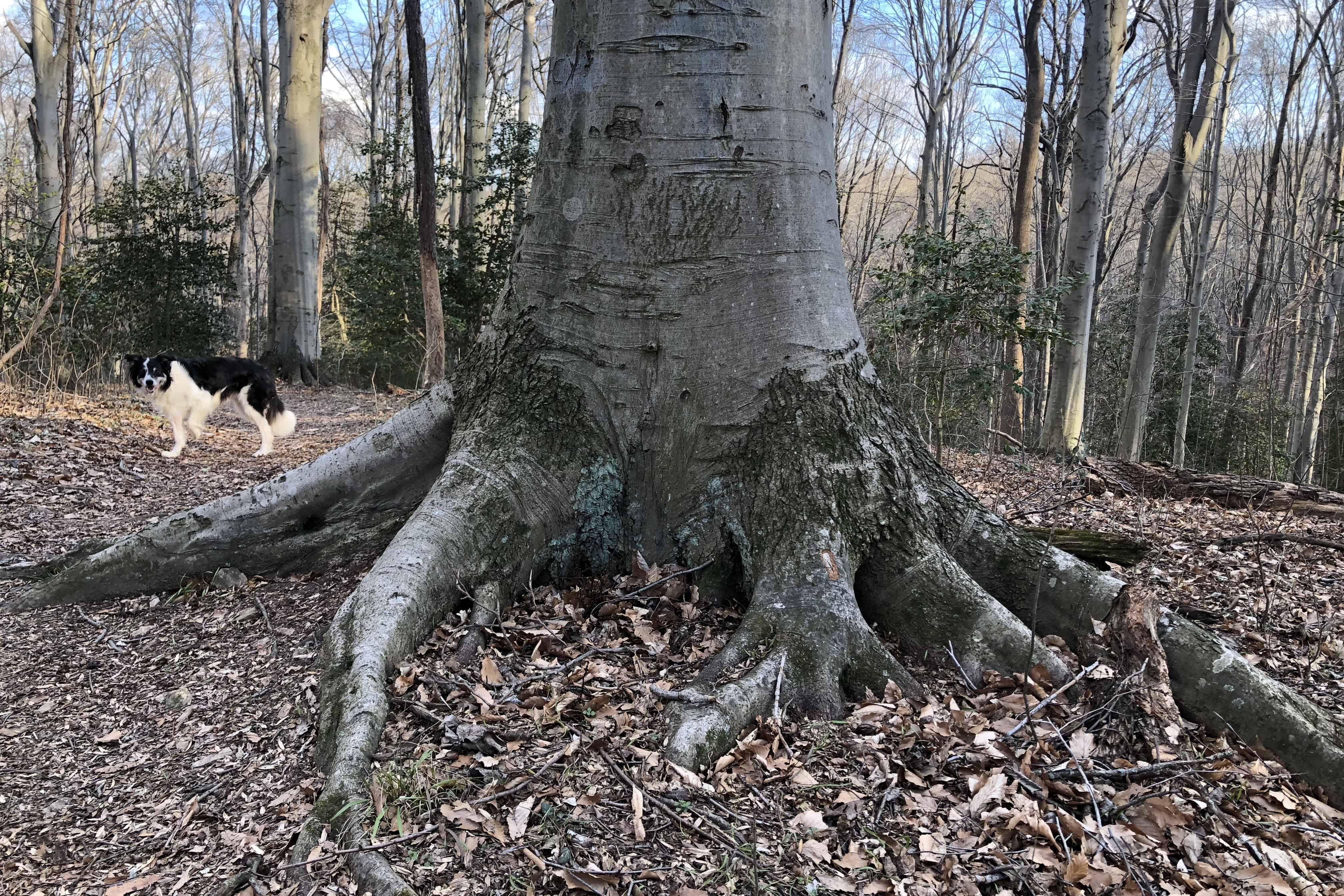From my previous post on roots, we know that tree roots provide structural support, and they are the conduit for nutrient absorbsion. Trees have to have healthy root systems to support the trunk and canopy. Tree root systems are loosely classified by their growing patterns. These patterns are most obvious in young trees and trees growing in optimal environments.
Three Main Types
Tap root systems are characterized by one central root extending down from the main trunk. Usually oaks, hickory, and walnut trees fall into this category. This root structure is more obvious in young trees. Looking at the way the trunk of this very large walnut tree goes straight down into the ground suggests that the roots may extend down more than laterally. By looking at the size of this tree, it is probably located in an area for optimal growth and root structure.
Heart root systems have multiple primary roots that extend laterally from the trunk and are attached to numerous secondary roots. These are mostly horizontal in their growing pattern. Some trees that characteristically have this type of root system are red oak, honey locust, basswood, sycamore, and pines. This is a picture of three pine trees and it shows how the trunk flares at the base suggesting that there are primary and lateral roots.
Flat root systems don’t have the obvious primary roots. They are horizontal and spread laterally. Trees that characteristically have this type of root system are birch, fir, spruce, sugar maple, cottonwood, silver maple, hackberry. This is a picture of a sugar maple tree. I am guessing that for years the mulch covered the roots. These roots are tangled and not extending straight from the trunk which would be more optimally characteristic of a flat root system.
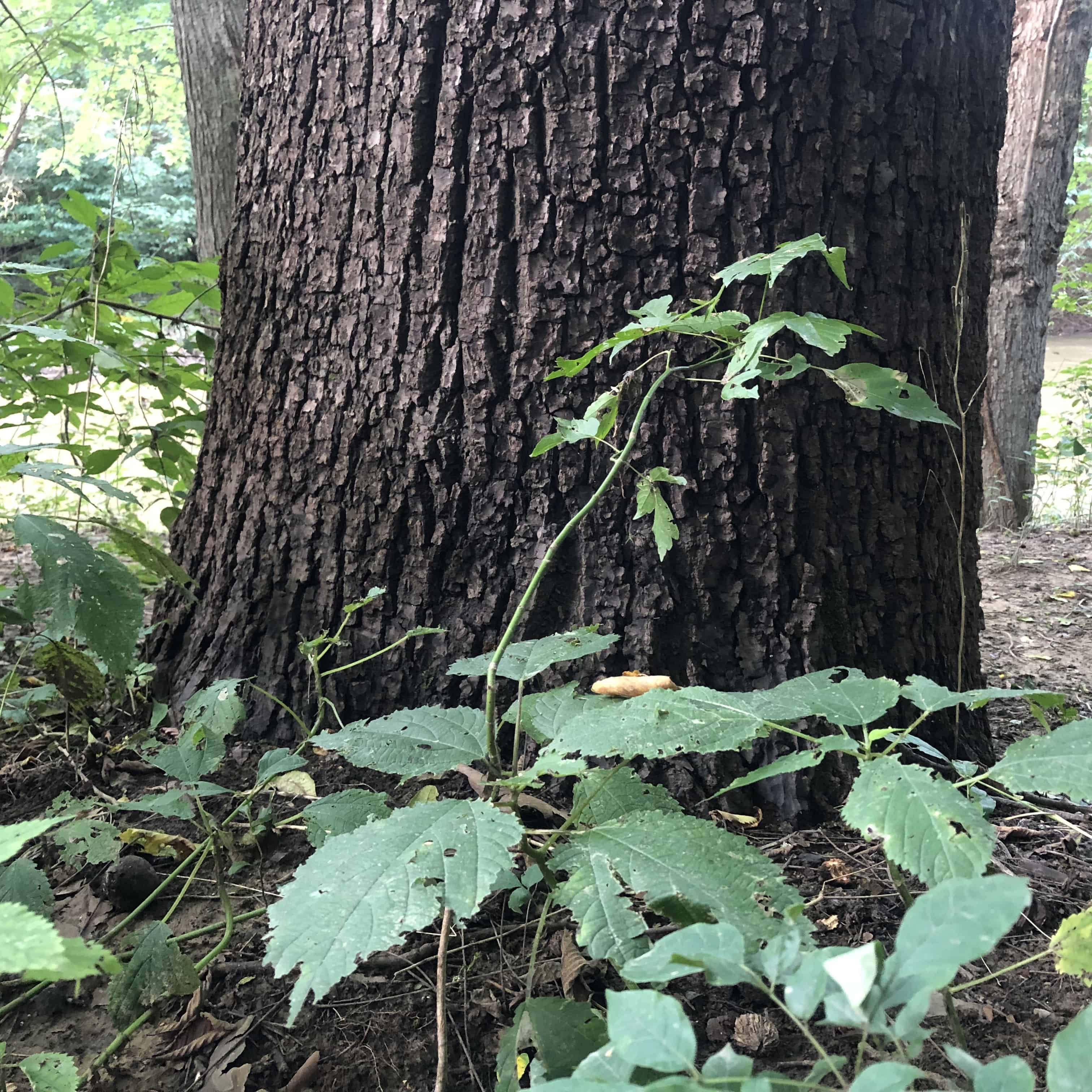
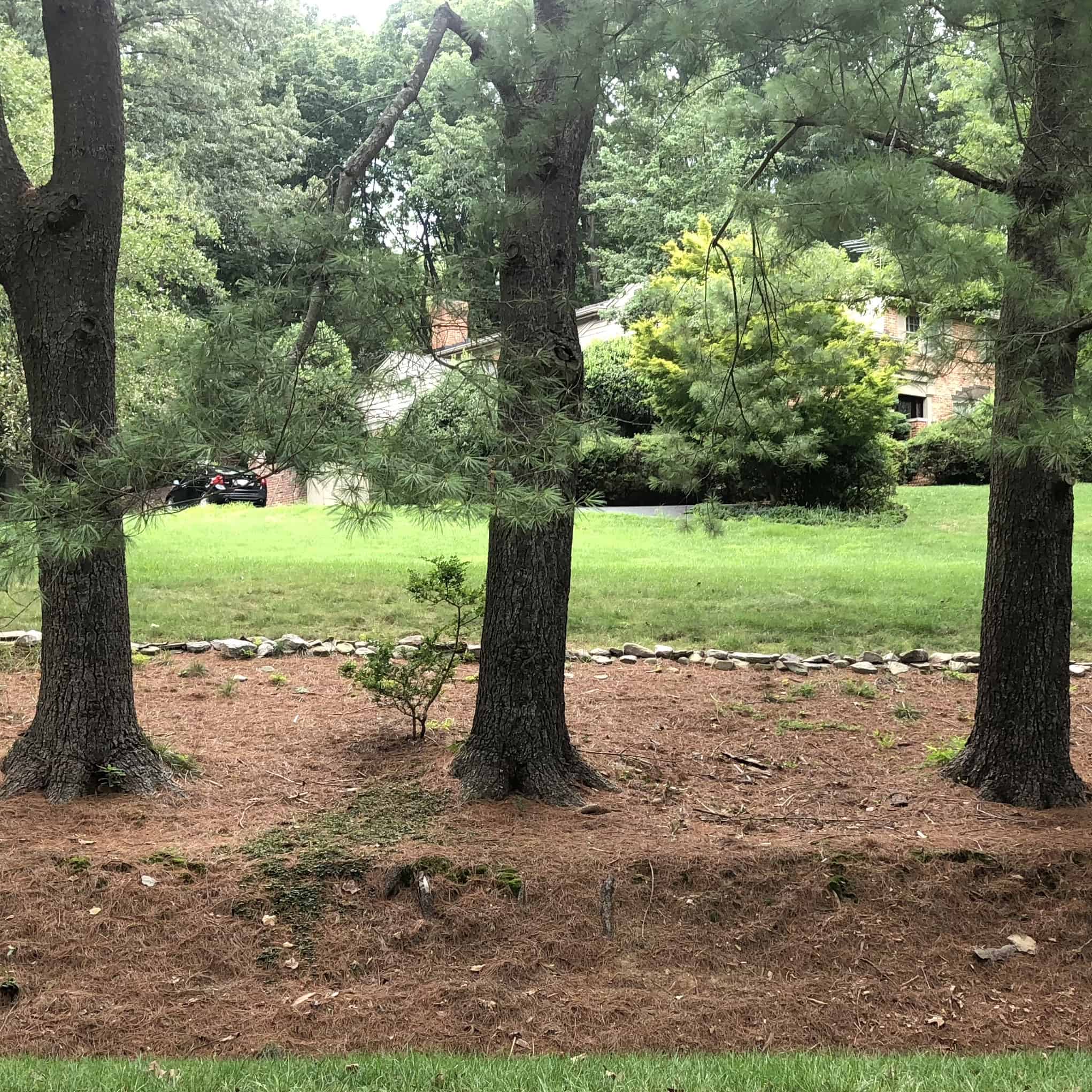
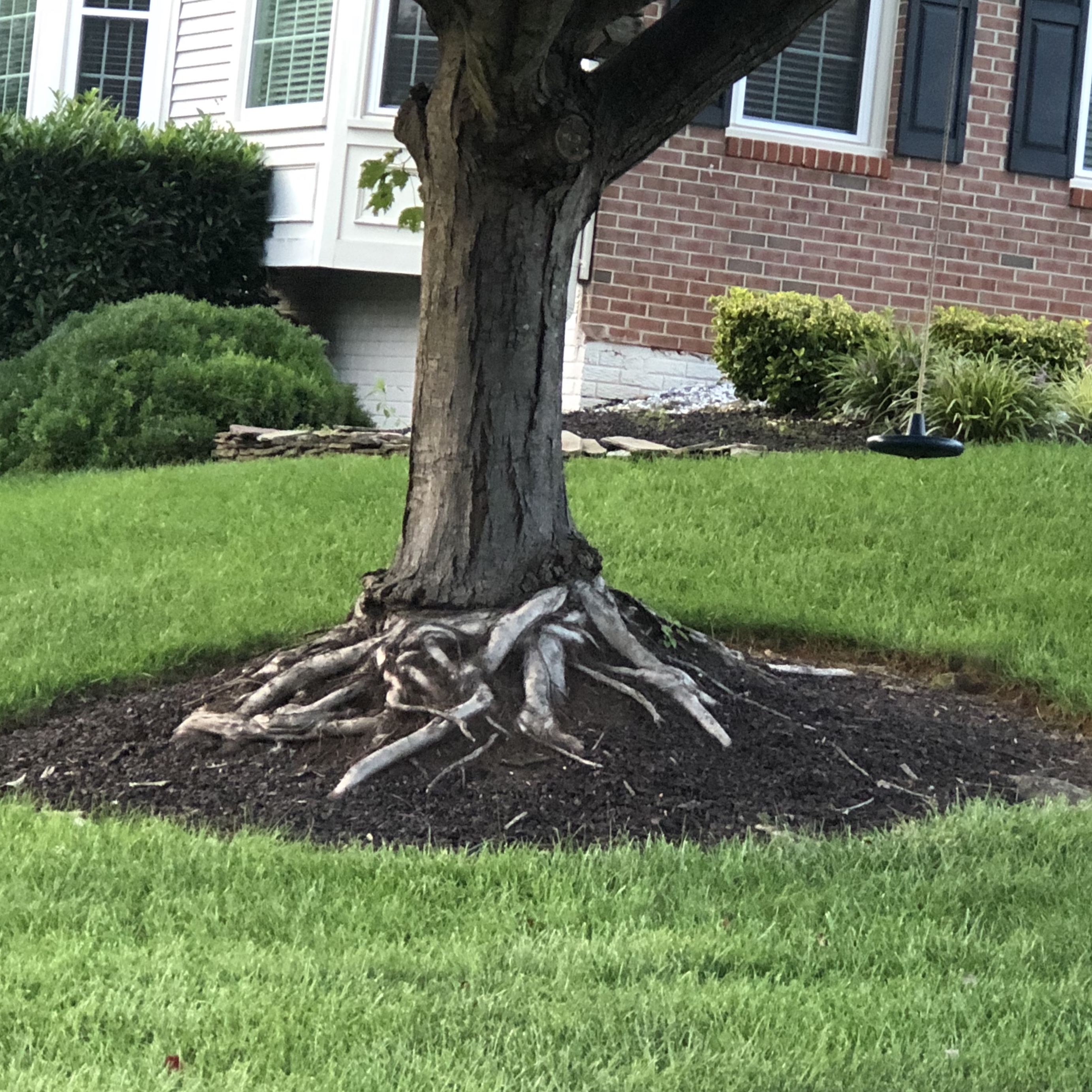
Evolution Made Trees Opportunistic
Trees are opportunistic and the root systems adapt to the soils conditions, physical barriers, and weather. As trees mature, their typical root system may or may not be evident. This is a great example of beech tree root systems in the forest. Young seedling beech trees typically have a tap root system. When these trees grow in the woods where there is a large humus accumulation (decay), as they mature, that root system changes to roots that extend laterally and colonize in the highly organic upper layers of the soil.
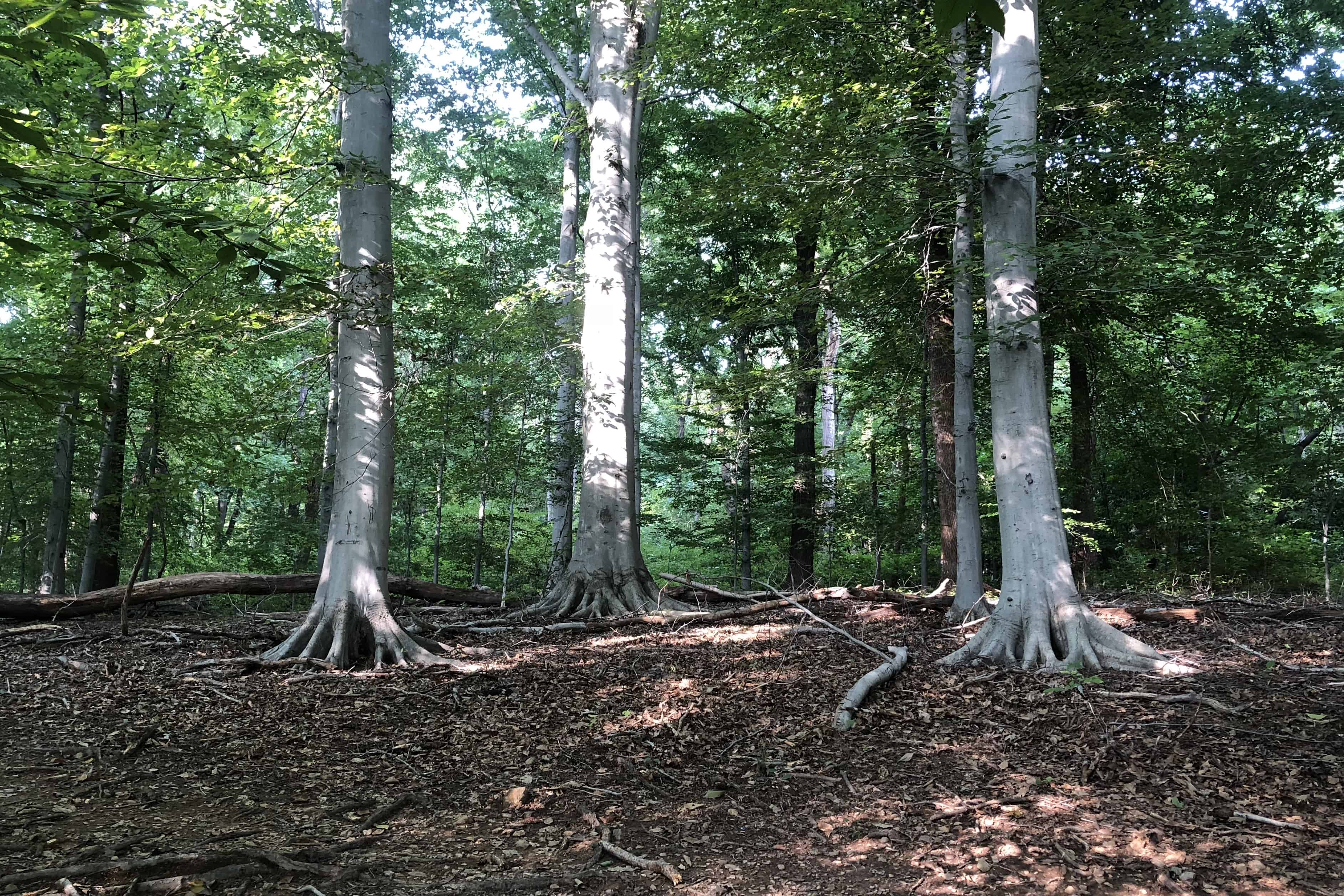
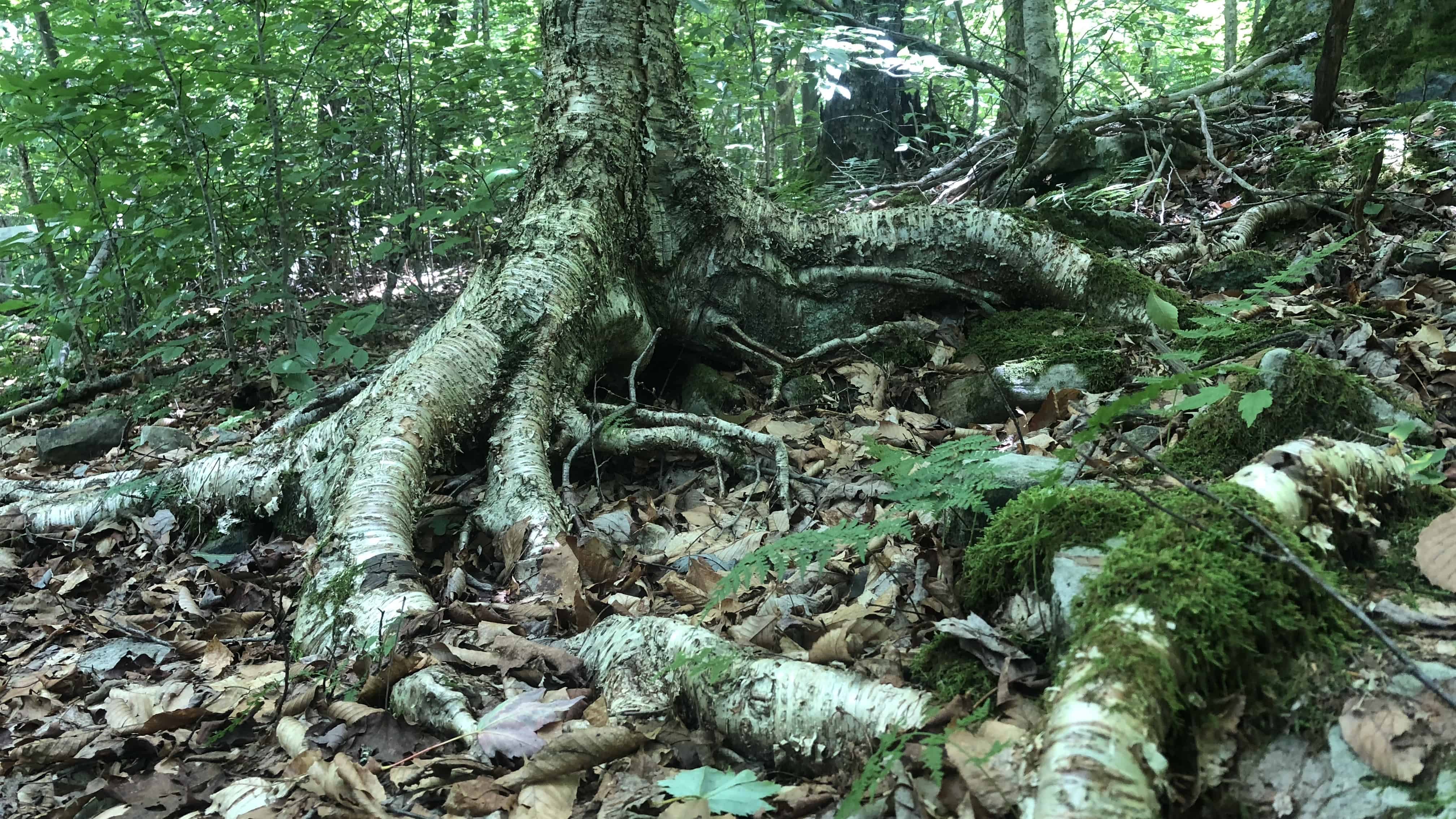
This tree is located on a very rocky hillside in West Virginia. As you can see, years ago the roots extended over rocks to try to reach viable soil.
Take away: Tree roots characteristically have a specific root system however over many years it may change due to the conditions.
This is part 2 of a 4 part series on roots. After reading the series you should have a better understanding of the value and growing patterns of tree roots. Please see Tree Roots 101: Functions and Types for part 1.
References:
Studying Beech roots in woodland soils
International Society of Arboriculture
Forestry Extension: Tree Biology
